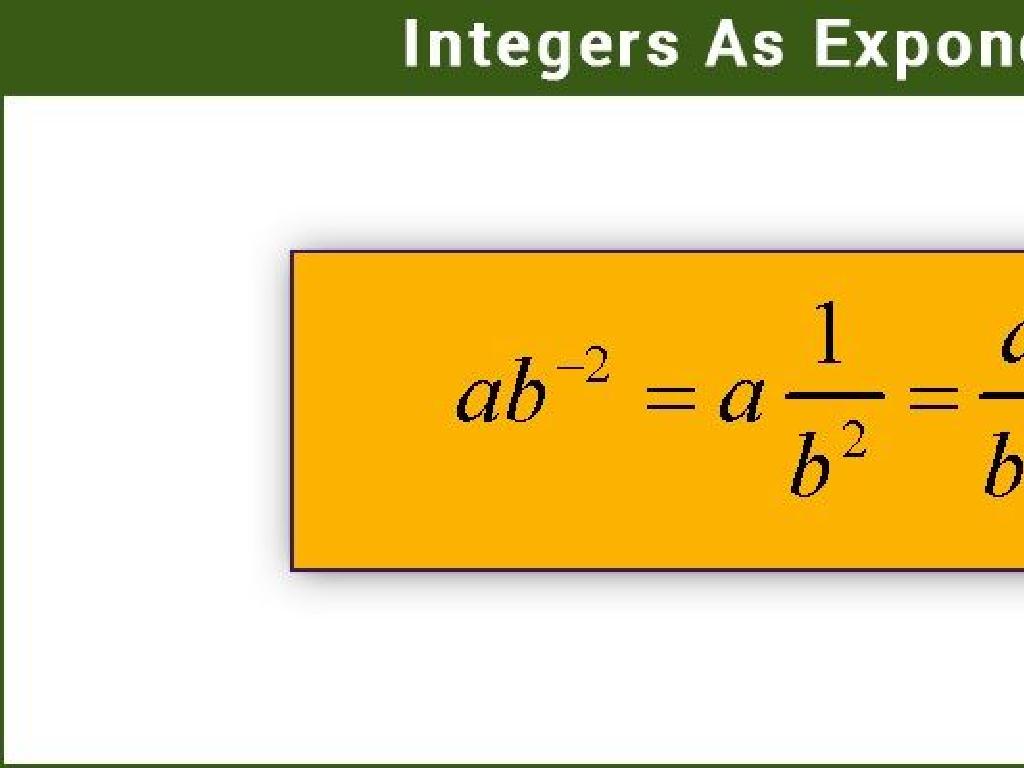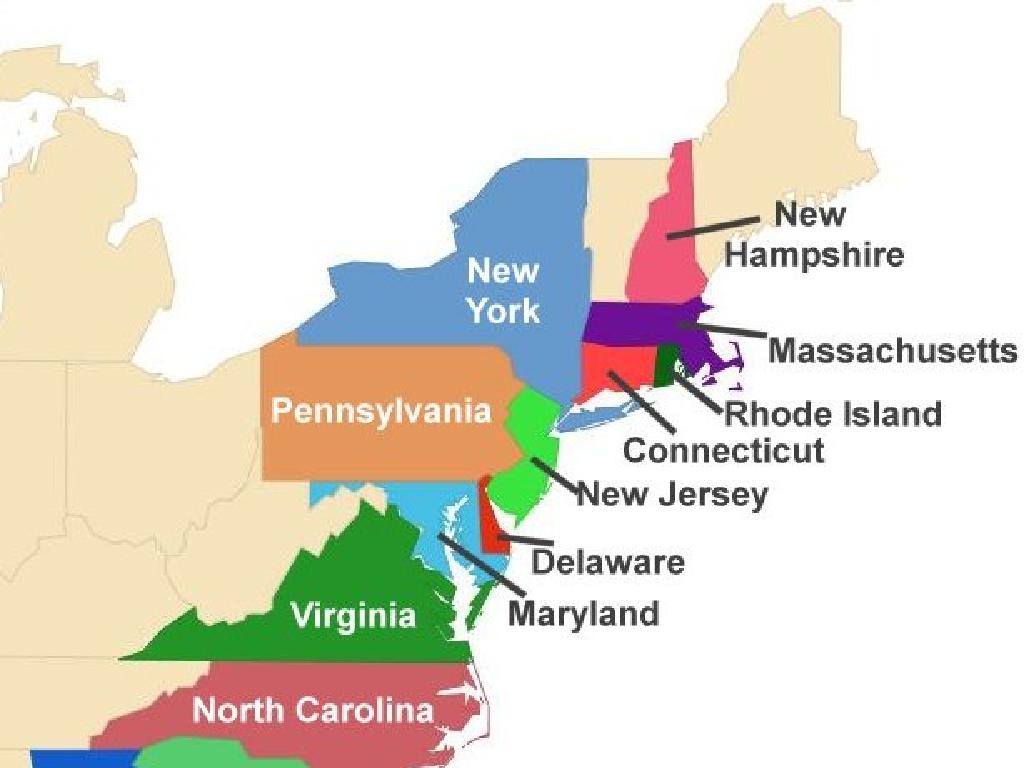Addition Word Problems Up To 10
Subject: Math
Grade: First grade
Topic: Addition Up To 10
Please LOG IN to download the presentation. Access is available to registered users only.
View More Content
Welcome to Addition!
– Learning to add numbers up to 10
– Addition combines things into a total
– Like adding 2 apples + 3 apples to make 5 apples
– Solving puzzles using addition
– Example: 4 birds + 3 birds. How many birds in total?
– Practice makes perfect
– We’ll do lots of practice problems together!
|
This slide introduces first graders to the concept of addition as a means of combining quantities to find a total. Start by explaining that addition is just putting things together and counting them up. Use tangible examples like fruits or toys to illustrate the point. Move on to simple word problems that they can visualize, such as birds in the sky or blocks in a pile. Encourage the students to use their fingers or objects to count and solve the problems. The goal is to make them comfortable with the idea of addition as a fun activity. Provide plenty of practice problems and praise their efforts to build confidence.
Understanding Addition
– Addition combines two amounts
– Adding makes the total grow
– The ‘+’ sign means add
– Practice with simple sums
– Example: 2 apples + 3 apples = 5 apples
|
This slide introduces the basic concept of addition to first graders. Start by explaining that addition is a way of putting together two or more numbers to find out how many there are in total. Emphasize that when we add, the total amount always becomes larger. Show the ‘+’ sign and explain that it is the symbol used to indicate addition. Use real-life examples like combining groups of apples to make the concept relatable. Encourage students to think of addition as gathering things together to have more. After explaining, engage the students with simple addition problems up to 10 to solidify their understanding.
Understanding Addition in Word Problems
– Spotting addition words
– ‘Total’ means add up
– When you see ‘total’, think of adding numbers together.
– ‘Altogether’ signals addition
– ‘Altogether’ is a clue to combine numbers in a story.
– ‘Combined’ equals adding
– ‘Combined’ tells us two amounts are put together.
|
This slide is aimed at helping first graders recognize keywords in word problems that indicate the need to add numbers. The words ‘total’, ‘altogether’, and ‘combined’ are common signals that the problem is asking for the sum of two or more numbers. It’s important to emphasize that these words are clues in a story that tell us to add the numbers to find the answer. During the lesson, provide examples of simple word problems using these keywords and guide the students through the process of identifying the numbers to be added and calculating the sum. Encourage students to share their own examples and practice with peers to reinforce the concept.
Let’s Add Together!
– Example: 2 apples + 3 apples
– What is 2 apples plus 3 apples?
– Count all apples to find the sum
– Adding means putting together, so we combine 2 and 3.
– Let’s count them together now!
– Practice counting with me: 1, 2, and then 3 more makes 5!
|
This slide introduces the concept of addition through a relatable example of counting apples. Start by showing the students the example problem and ask them to visualize 2 apples and then 3 more apples. Encourage them to use their fingers or objects to count the total number of apples. This interactive approach helps them understand that addition is simply combining two groups of items. Reinforce the concept by counting together as a class. For the activity, provide various simple addition problems and have students count aloud or with objects to find the answer. This hands-on experience solidifies their understanding of addition up to 10.
Your Turn to Try: Adding Balloons!
– Tom starts with 4 balloons
– Sue gives Tom 5 more balloons
– How many balloons does Tom have?
– Let’s draw to find out!
– Draw 4 balloons, then add 5 more and count all the balloons.
|
This slide presents a simple addition word problem to help first graders practice their addition skills up to 10. Start by reading the problem aloud and ensure the students understand the scenario. Encourage them to visualize the problem by drawing it out. They should draw four balloons to represent the ones Tom already has and then add five more to represent the balloons given by Sue. After drawing, guide them to count all the balloons together to find the total. This exercise combines visual aids with addition to reinforce the concept of combining two groups to find a total. It’s a hands-on activity that will help students better grasp the concept of addition.
Adding with Our Fingers
– Use fingers for adding numbers
– Numbers up to 10 can be added
– Example: Adding 2 + 4
– Hold up 2 fingers on one hand, and 4 on the other, then count all fingers
– Show your answer with fingers
– After counting, how many fingers are held up in total?
|
This slide is designed to introduce first graders to the concept of using their fingers as a visual and tactile tool for addition. Start by explaining that each finger represents one unit. Demonstrate adding 2 + 4 by holding up 2 fingers on one hand and 4 on the other, then counting all the fingers together. Encourage the students to follow along with their own fingers. This method helps solidify the concept of addition as combining two groups of items. For the activity, have students practice with different combinations of numbers up to 10, ensuring they understand that the total number of fingers represents the sum of the two addends. This hands-on approach makes abstract concepts more concrete for young learners.
Addition Practice: Let’s Solve Together!
– Work on addition problems
– Count carefully for each problem
– Use your fingers or objects to count
– Double-check your answers
– Review your work to avoid mistakes
– Have fun adding numbers up to 10
|
This slide is designed to engage first-grade students in practicing addition problems with sums up to 10. The worksheet should include a variety of problems that encourage students to count objects, use their fingers, or visualize the addition in their minds. Remind them to count carefully and to check their work after solving each problem to ensure accuracy. Reinforce that making mistakes is okay and part of learning. Encourage a positive attitude by reminding them that math can be fun. For the teacher: Prepare a worksheet with simple addition problems. Consider using visual aids like counters or number lines for students who need them. Have a few examples ready to demonstrate on the board, and be prepared to assist students who may struggle with the concept of addition.
Class Activity: Addition Scavenger Hunt
– Let’s explore and find items
– Count items and add them together
– For example, find 4 pencils and 3 erasers: 4 + 3 = ?
– Work with a buddy to solve problems
– Have fun adding up to 10
|
This activity is designed to make learning addition hands-on and fun. Students will pair up and search the classroom for items to add together, with the sums not exceeding 10. This encourages teamwork and practical application of addition skills. As a teacher, facilitate the activity by ensuring all pairs are engaged and assist any students who may need extra help. Possible variations of the activity: 1) Assign specific items to find and add. 2) Have students draw the items they find and write the addition sentence. 3) Create a competition for who can find and correctly add the most sets of items. 4) Integrate storytelling by having each pair create a short story about the items they’ve added. 5) Use a timer to add a sense of urgency and fun to the scavenger hunt.
Congratulations on Learning Addition!
– Proud of your addition skills
– Adding is useful every day
– Think about using addition for counting toys or sharing snacks.
– Practice makes perfect
– You’re becoming addition stars!
– Keep practicing with games and puzzles to shine bright in math.
|
This slide is meant to celebrate the students’ accomplishments in learning to add numbers up to 10. It’s important to reinforce the idea that addition is not just a math skill but a practical tool they can use in their daily lives, such as counting objects or dividing items evenly among friends. Encourage them to continue practicing their new skills through engaging activities, games, and real-life applications to solidify their understanding and become confident in their abilities. Recognize their hard work and progress, and motivate them to keep improving by setting a positive and enthusiastic tone for their ongoing learning journey in mathematics.




/mla_citation_example.jpg)

